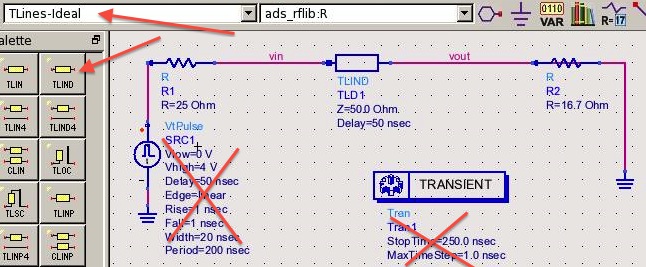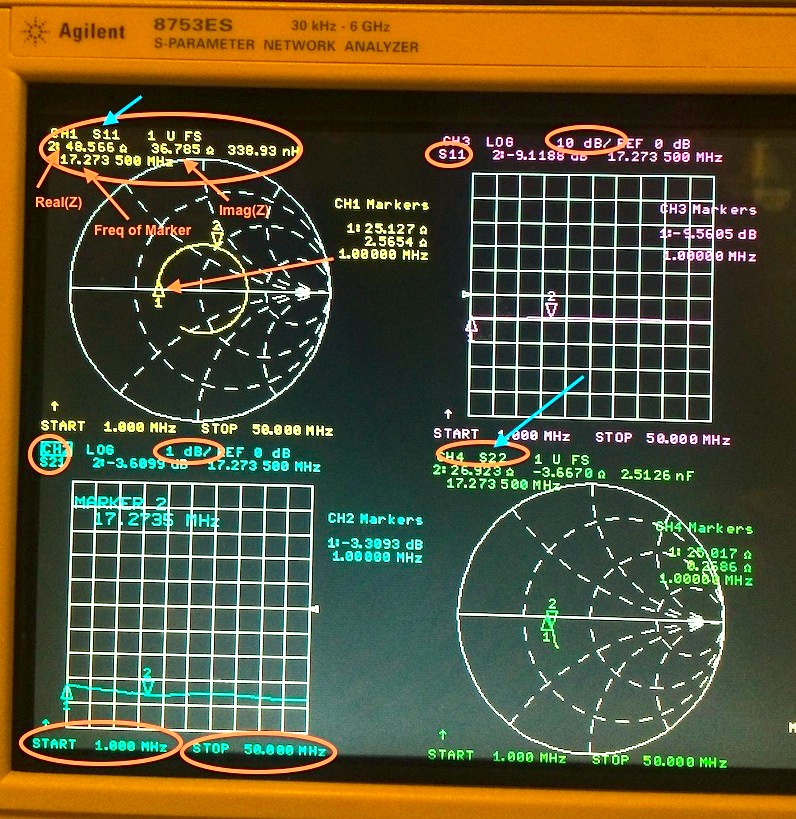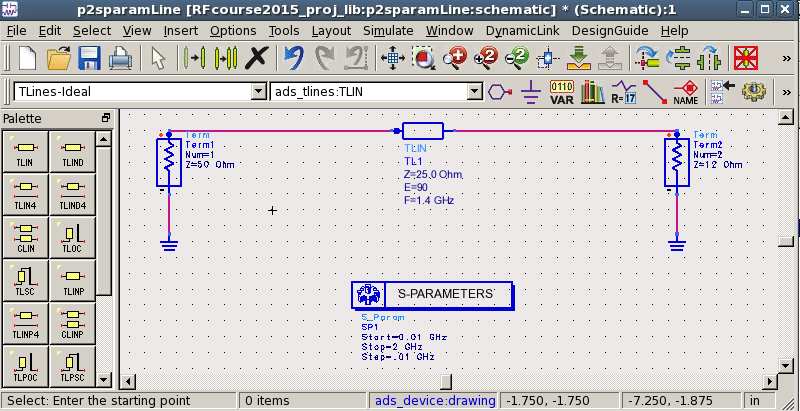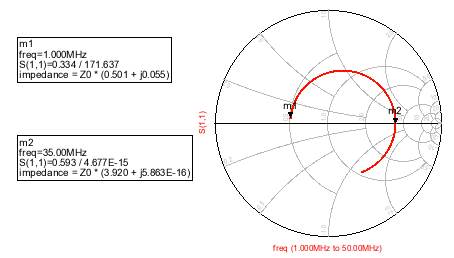Microwave Circuits and
Metamaterials
Project 3
Overview
Remain in same project groups for the
semester.
The objective of this project is to measure S-parameters and pulse
reflection in the lab.
NOTE: Use the Project Report Template and keep answers to questions on consecutive sheets
of paper with all plots at the end.
IN NO CASE may code or files be exchanged between students, and
each student must answer the questions themselves and do their own
plots, NO COPYING of any sort! Nevertheless, students are
encouraged to collaborate in the lab session.
Only turn in requested plots (Pxx )
and requested answers to questions (Qxx ).
Part 1
- In this part, S-parameters and pulse reflections are measured
in the lab.
- There will be two stations in the lab, one for pulse
measurements and one for S-parameter measurements.
- Due to limited space, please alternate in groups of 2 at each
station to perform the experiments.
- For expedience, each student should take pictures of the
displays to include in your reports. If you dont have
access to a cameraphone/etc, ask me to take a picture for you
when you are ready, and i can email it to you.
- Pulse reflection measurements:
- We will be making a pulse reflection measurement that
roughly corresponds to our simulation experiments in the
pulse1/schematic from project 1
- Right-click and select "copy cell" to make a copy of this
earlier design, and edit it to reflect the new scenario.
Replace the "MLIN" transmission line with an
appropriate-length TLIND line as shown below (see upper left
red arrows below).
- For the experiment in the lab, our source impedance will be
25 ohms, our transmission line will be 50 ohms, and our load
impedance will be 16.7 ohms. Please note that the
voltage listed on the pulse generator in the lab is the
matched-load voltage, not open circuit voltage. If
you are simulating this before your measurements, set the
pulse for 5 MHz pulse frequency, 20 ns pulsewidth, 5ns
rise/fall time.
- Simulate for 250 ns, to see at least one full cycle of the
pulse generator.
- Based on your measurements in the lab, change the values on
the schematic of the voltage source voltage, pulse width,
pulse period, etc. and edit the transmission line time delay,
such that your final simulation results match your
experimental results

- S-parameter measurements:
- We will be making S-parameter measurements that roughly
correspond to a situation similar to our project 2 simulation.
- Open the p2sparamLine design in the workbook by clicking
that design file.
- Right-click and select "copy cell" to make a copy of this
earlier design, and
- Edit the new copy so that it reflects the scenario in the
lab. Change the TLIN line to 50 ohms with
E=90 at whatever frequency in MHz best corresponds to your lab
measurements, set source Term1 to 50 ohms, and load Term2 to
25 ohms. Change the S-parameter sweep to go from 1 to 50 MHz in 1 MHz steps.
Adjust to an appropriate-length the TLIND line such that it
reflects your measurements using the the approximately 6-foot
long line in the lab (if you want to estimate it before going
into the lab, assume a velocity of 0.7 c, and length of 6
feet).
- Save a snapshot of your new schematic and paste it into your
report. ( P4 )
- Run the simulation, and plot the Smith chart (somewhat
different from that illustrated below):
- Set two markers as above (one at 1 MHz and the other at
where it crosses the axis on the right side)
- Save a snapshot of the schematic and paste it into
your report. ( P5 )
- What are the two un-normalized impedances (assume closest
pure resistance) at the markers, and what is the transformer
ratio (ratio of the 2 impedances)? ( Q7
)
- Set up the S-parameter measurement as illustrated below,
with a bias tee and 50-ohm term at port 2 to create the 25 ohm
load
- Have the instructor adjust the display to the following
format:

- Check that the start/stop are 1 MHz and 50 MHz (bottom left
above), and that the two Smith charts are S11 and S22 (blue
arrows above)
- Adjust marker1 to 1 MHz, and adjust marker2 to where the
plot crosses the Smith chart on the right (as shown in the
simulation above). See the arrows in the previous
photograph for the location of the marker controls.
- Save a cellphone picture of the netwrok analyzer display as
above (but with markers correctly positioned) and paste it
into your report. ( P6
)
- What are the two un-normalized impedances (assume closest
pure resistance) at the tow markers, and what is the
transformer ratio (ratio of the 2 resistances)? ( Q8 )
- Compute reflection coefficient Gamma, and return loss seen from port1 at 1MHz
(assume the transmission line is a wire). ( Q9 )
- From the upper right plot of S11 in dB, what is the measured
S11 in dB at 1 MHz? ( Q10 )
- Why do you "see a circle" on the Smith chart of S11, but not
on the Smith Chart of S22? ( Q11 )
NOTE ReportTemplate: Use the Project Report Template
and keep answers to questions on
consecutive sheets of paper with all plots at the end.
Do not add extraneous pages or put explanations on separate
pages unless specifically directed to do so. The instructor will
not read extraneous pages!
Only turn in requested plots (Pxx )
and requested answers to questions (Qxx ).
All plots must be labeled P1, P2, etc. and all questions must be
numbered Q1, Q2, etc. YOU MUST ADD CAPTIONS AND FIGURE
NUMBERS TO ALL FIGURES!!
Copyright © 2010-2015 T. Weldon
Cadence, Spectre and Virtuoso are registered trademarks of
Cadence Design Systems, Inc., 2655 Seely Avenue, San Jose, CA
95134. Agilent and ADS are registered trademarks of Agilent
Technologies, Inc.




